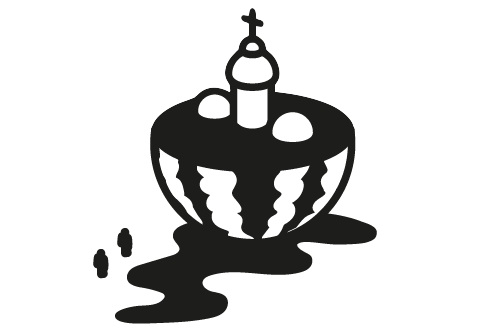 Woman is Space: Oksana Vasyakina’s Rana
Woman is Space: Oksana Vasyakina’s RanaEuropean Review of Books, June 2022
“Thinking with Woolf and others, Rana begins to overlay and intertwine the different scales of prostranstvo—textual, bodily, domestic, landscape—and thus elaborates a worldview that can reconcile Oksana’s uneasy relationship to womanhood, her nostalgia for Siberia, her grief. That worldview reconciles the comforts of her mother's domestic prostranstvo with her own lesbian desire by conjuring landscapes out of lovers' bodies: « When I look at the body of a woman, it enchants me...It glows in space, it's like bread or stone, I love it. I look upon it as I would a rich, complicated landscape. » And at the center of the novel, the prose dissolves into a long poem titled « Ode to Death », in which Oksana's mother transmogrifies into spaces of different scales: the space of her own body, the domestic space of her apartment, the sterile hospice in which she dies, the space of landscape.“
Женщина—это и есть пространство: Рана (Оксана Васякиниа)
European Review of Books, июнь 2022 г.
“Думая с Вулф и другими авторами, Рана накладывает и переплетает различные масштабы пространства—текстовый, телесный, домашний, ландшафтный—чтобы разработать мировоззрение, способное примирить непростое отношение Оксаны с женственностью, ее тоска по-Сибири, ее горе. То мировоззрение примиряет удобность домашнего пространства ее мамы со ее собственным лесбийским желанием, создавая пейзажи из тел своих возлюбленных: « Когда я рассматриваю тело жены, оно очаровывает меня...оно светится в пространстве, оно как хлеб или камень, я его люблю. Я рассматриваю ее как сложный богатый ландшафт. » А в середине романа, проза растворяется в длинное стихотворение под названием « Ода Смерти, » в котором мама Оксаны превращается в пространства различных масштабов: пространство своего тела; домашнее пространство своей квартиры; стерильный хоспис, в котором мама умирает; пространство ландшафта.“
European Review of Books, июнь 2022 г.
“Думая с Вулф и другими авторами, Рана накладывает и переплетает различные масштабы пространства—текстовый, телесный, домашний, ландшафтный—чтобы разработать мировоззрение, способное примирить непростое отношение Оксаны с женственностью, ее тоска по-Сибири, ее горе. То мировоззрение примиряет удобность домашнего пространства ее мамы со ее собственным лесбийским желанием, создавая пейзажи из тел своих возлюбленных: « Когда я рассматриваю тело жены, оно очаровывает меня...оно светится в пространстве, оно как хлеб или камень, я его люблю. Я рассматриваю ее как сложный богатый ландшафт. » А в середине романа, проза растворяется в длинное стихотворение под названием « Ода Смерти, » в котором мама Оксаны превращается в пространства различных масштабов: пространство своего тела; домашнее пространство своей квартиры; стерильный хоспис, в котором мама умирает; пространство ландшафта.“

